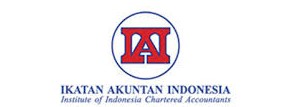Studi Kualitatif Penggunaan QRIS (Quick Respond Indonesian Standard) dalam Pemungutan ZIS (Zakat, Infaq, dan Shadaqah)
(Studi Empiris pada Masjid-Masjid di Kota Padang)
Abstract
Research has been carried out on the use of the Indonesian Quick Response Code system as a means to facilitate the collection of zakat, infaq, and alms activities at several mosques in the city of Padang. This study uses a qualitative research method with a descriptive approach. The object of this research is the Indonesian Quick Response Code payment system, while the research subject is the welfare board or mosque general treasurer who plays an important role in implementing the Indonesian Quick Response Code payment system. The methods used in data collection are the interview method and the documentation method. Based on research data, the effectiveness of the basis for using the Indonesian Quick Response Code in collecting zakat, infaq, and alms is assessed based on the application of stakeholder theory and management theory. On the other hand, the obstacles found in this study are that some mosque worshipers do not understand and are accustomed to following technological developments so that pilgrims are more comfortable using the infaq box compared to the Indonesian Quick Response Code system. The limitations of this study are that the research sample is only 5 mosques in the city of Padang, so that further research is expected to be able to take a larger sample.
References
A.T. Purnomo, Y. S. (2016). Mutual authentic in securing mobile payment system using encrypted QR Code based on public key infrastucture. Proc.2016 6th International Conference system.
Abbas, A. E. (2017). Literature review of a cashless society in Indonesia: evaluating the progress. International Journal of Innovation, Management and Technology, 8(3), 193-196.
Alwasilah, C. A. (2003). Pokoknya Kualitatif. Jakarta: PT Dunia Pustaka.
Angelina, C. &. (2020). Conceptual model for cashless society: A literature synthesis. Europan journal of Business And Management Research, Vol. 5, page 3.
Arner, D. W. (2017). Fintech, Regtech, an Reconceptualization of Financial Regulation. Northwestern International Law & Business, Vol.3, page 37.
Bungin, B. (2003). Analisis data kualitatif "Pemahaman Filososfis dan Metodologis keArah Penguasaan Model Aplikasi. Raja Grafindo Persada.
Clarkson, M. S. (1994). Reflections on stakeholder theory. The Toronto onference (pp. 33(1),82). Toronto: Business and Society.
Creeswell, J. (1998). Research Design: Qualitative & Quantitative Approaches. Thousand Oaks: CA: Sage Publications.
Davis, J. S. (1997). Toward a stewardship theory of management. Academy of Management Review, Vol. 22(1), 20-47.
Denzim, N. &. (1994). Entering the field of Qualitative Research. CA: Sage Publication.
Evans, D. &. (2005). Paying with plastic: The digital revolution in buying and borrowing. Mit Press.
Fandiyanto, R. (2019). Transformasi Sistem Pembayaran Elektronik di Indonesia dan Implikasi Terhadap Kemajuan Bisnis Kreatif Berbasis Daring di Wilayah Eks Keresidenan Besuki. In Prosiding Seminar Nasional & Call for Paper, page. 144-153.
Florestiyanto, M. Y. (2015). Evaluasi Kesiapan Pengguna Dalam Adopsi sistem Informasi Terintegrasi di Bidang Keuangan Menggunakan Technology Readiness Index. In Seminar Nasional Informatika ( SEMNASIF), Vol. 1 No. 4.
Ghozali Imam dan Chariri, A. (2007). Teori Akuntansi. Semarang: Badan Penerbit Universitas Diponegoro.
Glyn, D. (2002). A History of Money: From Ancient Times to the Present Day. Cardiff, U.K: University of Wales Press.
Guthrie, J. R. (2006). The voluntary reporting of intellectual capital: comparing evidence from Hongkong and Australia. Journal of intellectual capital.
Hutagalung, J., Amrullah, A., Saniman, S., Maya, W. R., & Elfitriani, E. (2022). Digitalisasi Masjid Era Society 5.0 Menggunakan Teknologi Qris Pada Kas Masjid Al-Muslimin. JCES (Journal of Character Education Society), 5(1), 151–160.
Hutagalung, R. A., Nainggolan, P., & Panjaitan, P. D. (2021). Analisis Perbandingan Keberhasilan UMKM Sebelum Dan Saat Menggunakan Quick Response Indonesia Standard (QRIS) Di Kota Pematangsiantar. Jurnal Ekuilnomi, 3(2).
Indonesia, B. (2019). www.bi.go.id. Retrieved 7 18, 2021, from QR Code Indonesian Standard (QRIS): https://www.bi.go.id> QRIS
Kurniawati, E. T., Zuhroh, I., & Malik, N. (2021). Literasi dan Edukasi Pembayaran Non Tunai Melalui Aplikasi QR Code Indonesian Standard (QRIS) Pada Kelompok Milenial. Studi Kasus Inovasi Ekonomi, 05(01), 23–30.
Lestari, R. I., Santoso, D., & Indarto, I. (2021). Meningkatkan literasi keuangan digital pada pelaku UMKM melalui sosialisasi gerakan nasional non-tunai. Jurnal Inovasi Hasil Pengabdian Masyarakat (JIPEMAS), 4(3), 378.
Liu, Y. Q. (2019). An in-kind charitable donation system app design practice driven by social innovation design concept. Proc.-2009 6th International Conference Inf. Sci. Control Eng. ICISCE , page. 141-145.
Lusiana, N., Muamar, A., Wasman, W., & Sukardi, D. (2021). Praktik Transaksi Non Tunai Melalui Layanan Syariah Linkaja Pada Ekosistem Keislaman Di Kota Cirebon. Bilancia: Jurnal Studi Ilmu Syariah Dan Hukum, 15(1)
Marcheta, N. (2021). Pengembangan Sistem E-Infak Terintegrasi QRIS sebagai solusi Sosial Pandemi COVID-19 dengan metode SDLC. In Prosiding Seminar Nasional Teknik Elektro, Vol. 6, No.1, page 29-34.
Mardiyono, A. S. (2021). Pengembangan Sistem E-Infak Terintegrasi QRIS sebagai Solusi Sosial Pandemi COVID-19 dengan Metode SDLC. In Prosiding Seminar Nasional Teknik Elektro (pp. Vol. 6, No. 1, pp. 29-34). Depok, West Java: ISBN.
Maxwell, J. (1966). Qualitative Research Design : An Interactive Approach. Thousand Oak: CA: Sage Publication.
Moleong, L. (2007). Metodologi penelitian kualitaitf. Edisi revisi.
Morgan, D. B. (1996). What middle managers do in local government: Stewardship of the public trust and the limit of reinventing government. Public Administration Review , 359-366.
N, H. (2011). Interaksi tanggung jawab sosial, Kinerja sosial, Kinerja keuangan dan luas pengungkapan sosial. Maksimum: Media Akuntansi Universitas Muhammadiyah Semarang, Vol. 1 No.2: 59-67.
Nasution, S. (2003). Metode Penelitian Kualitatif. Bandung: Tarsito Publication.
Ngafifi, M. (2014). Kemajuan Teknologi dan Pola Hidup Manusia dalam Perspektif. Jurnal Pembangunan dan Pendidikan : Fondasi dan Aplikasi, Vol.2 Page.34.
Pracoyo, A., Wijaya, E., Bagasworo, W., Rofianto, W., Budhijana, B., Novita, N., Wardani, D., Sadikin, D. D. S., Khairani, Z., & Ramadhan, M. (2022). Sosialisasi QRIS Dalam Upaya Peningkatan Produktivitas UMKM Provinsi DKI Jakarta. LPMP Imperium, 4(1), 11–20.
Rahadi, R. A. (2020). Conceptual model for cashless society: A literature synthesis. European Journal of Business and Management Research, 5(3).
Ratcliff, D. (2001). Analytic Induction as Qualitative Research Method of Analysis.
Sihaloho, J. E. (2020). Implementasi Sistem Pembayaran Quick Response Indonesia Standard Bagi Perkembangan UMKM di Medan. Jurnal Manajemen Bisnis, SINTA 2, 287-297.
Silalahi, P. R., Tambunan, K., & ... (2022). Dampak Penggunaan QRIS Terhadap Kepuasan Konsumen Sebagai Alat Transaksi. ULIL ALBAB: Jurnal …, 1(2), 122–128.
Swartz, D. D.-F. (2004). The economics of a cashless society: an analysis of the costs and benefits of payment instruments. AEI-Brookings Joint Center for Regulatory Studies., pp. 221-222.
Tarantang, J. A. (2019). Perkembangan Sistem Pembayaran Digital Pada Era Revolusi Industri 4.0 di Indonesia. Jurnal Al-Qardh, SINTA 4, 60-75.
Untung, H. B. (2008). Corporate Social Responsibilty. Jakarta: Sinar Grafika.
Van Slyke, D. M. (2006). Agents or stewards: Using theory to understand the government-nonprofit social service contracting relationship . Journal of public administration research and theory, 157-187.
Wibisono, Y. (2007). Membedah Konsep & Aplikasi CSR. Gresik: Fascho Publishing.







.png)
.png)
